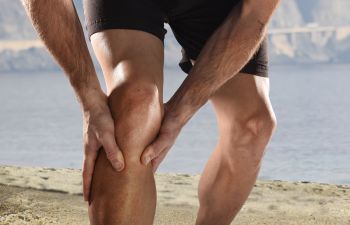
Iliotibial (IT) Band Syndrome is a common knee injury, accounting for up to 12% of running injuries and up to 24% of cycling injuries. The iliotibial band is a strong band of tissue that runs down the outside of the thigh, from the hip bones, all the way to the shin bone, stabilizing the outside of the knee. The iliotibial band can be irritated or irritate nearby tissues, causing pain. IT band syndrome can happen to anyone, but athletes, such as long-distance runners, are particularly susceptible.
Common Symptoms of IT Band Syndrome
Several issues can contribute to IT band syndrome, so symptoms can vary from case to case. However common symptoms include pain in the knee, particularly the upper outside of the knee. Swelling around and above the knee and a popping sensation are also common symptoms. The pain and popping sensation can increase when running or going down the stairs.
Factors That Contribute to IT Band Syndrome
You are more likely to develop IT band syndrome if you have hip bursitis or if you are a runner. Factors that increase your likelihood of developing IT band syndrome include running downhill or on uneven terrain, using improper or worn-out footwear, running several miles per day and running in cold weather. If you have legs that slope inward from your knee to your ankle (bowlegged) then you have a higher chance of developing IT band syndrome.
Treatments for IT Band Syndrome
Conservative treatments help most people with IT band syndrome. These include limiting your activities for a while, using ice to relieve inflammation, over-the-counter non-steroidal anti-inflammatory drugs, physical therapy and corticosteroid injections. Special exercises and stretches can also help to strengthen the muscles around the hip and the knee. If you have hip bursitis, then treatment for bursitis can alleviate IT band symptoms.
First, you’ll need a physical examination to distinguish between IT band syndrome and other possible causes, including osteoarthritis and a meniscal tear. Tests can include the Ober test, where the doctor will move your knee and hip while you lie on your side, or Noble’s compression test, which involves moving your knee while pressing on the outside of it.
If you suspect you have iliotibial band syndrome or if you have any other knee pain, contact the Robotic Joint Center today with our online form to schedule an appointment or call us at (212) 308-3089.
Posted on behalf of
New York, NY 10021
Phone: (212) 308-3089
FAX: (646) 844-1396
Email: Info@RoboticJointCenter.com
Mon – Fri: 9 AM – 6 PM